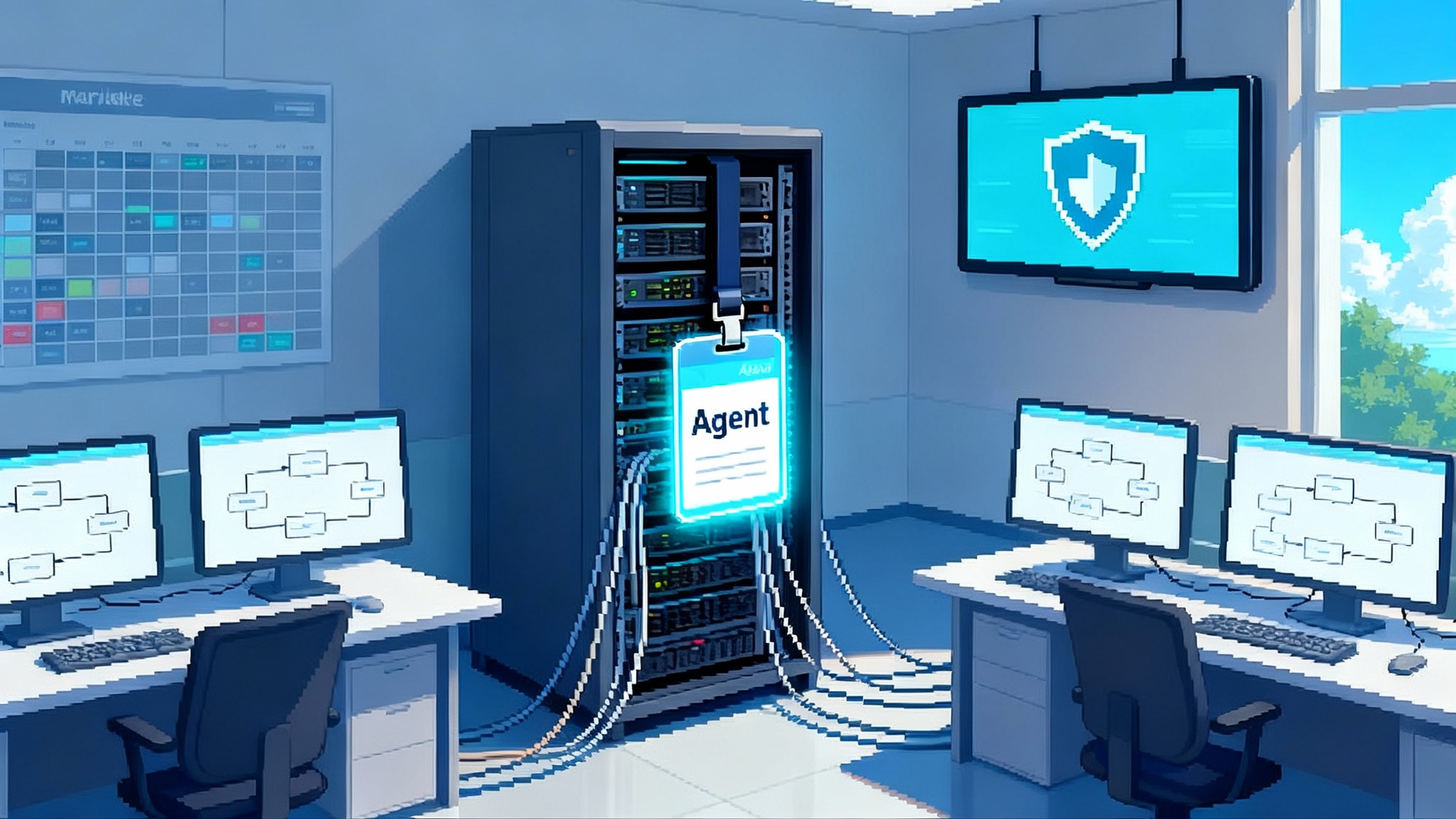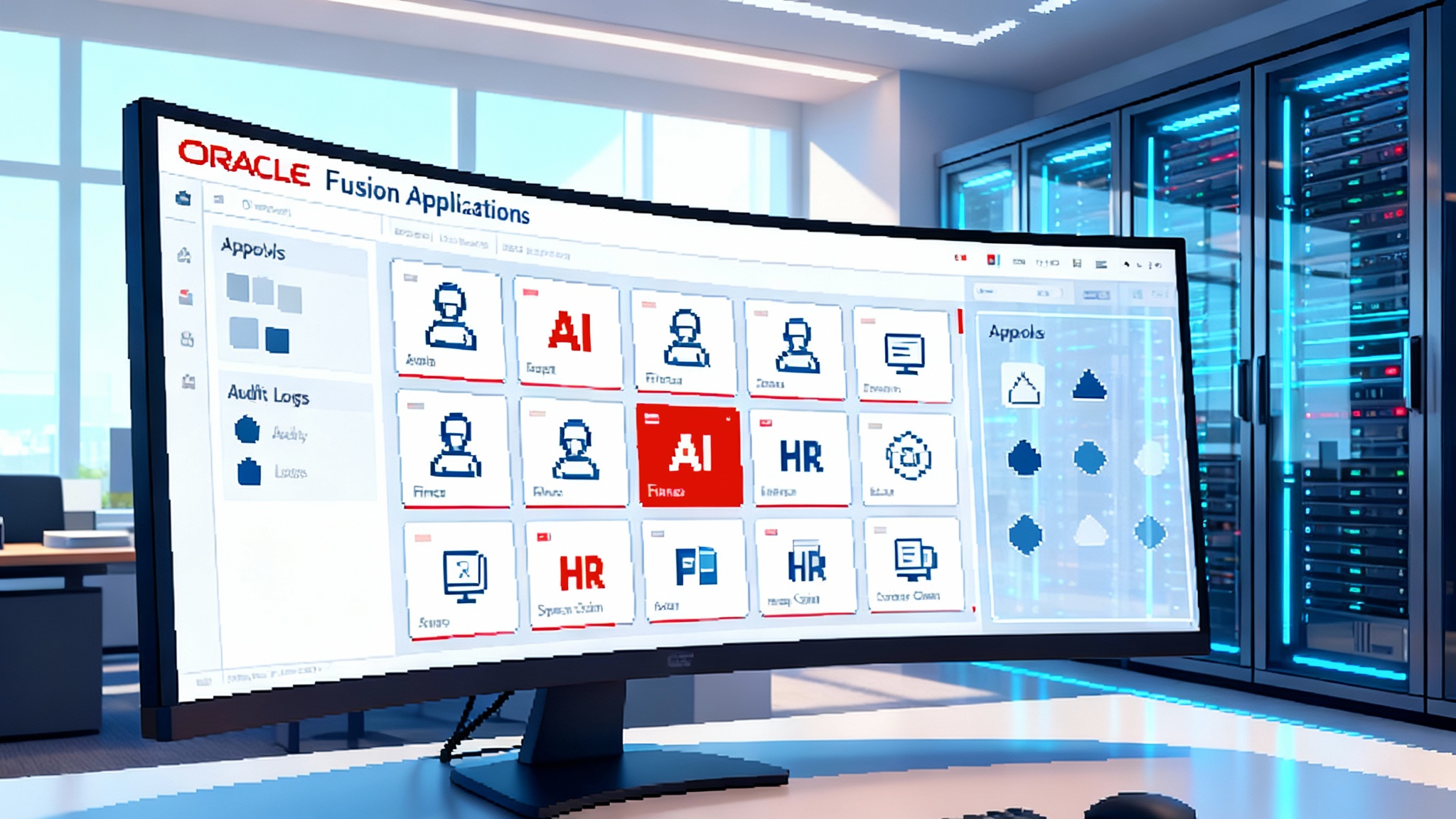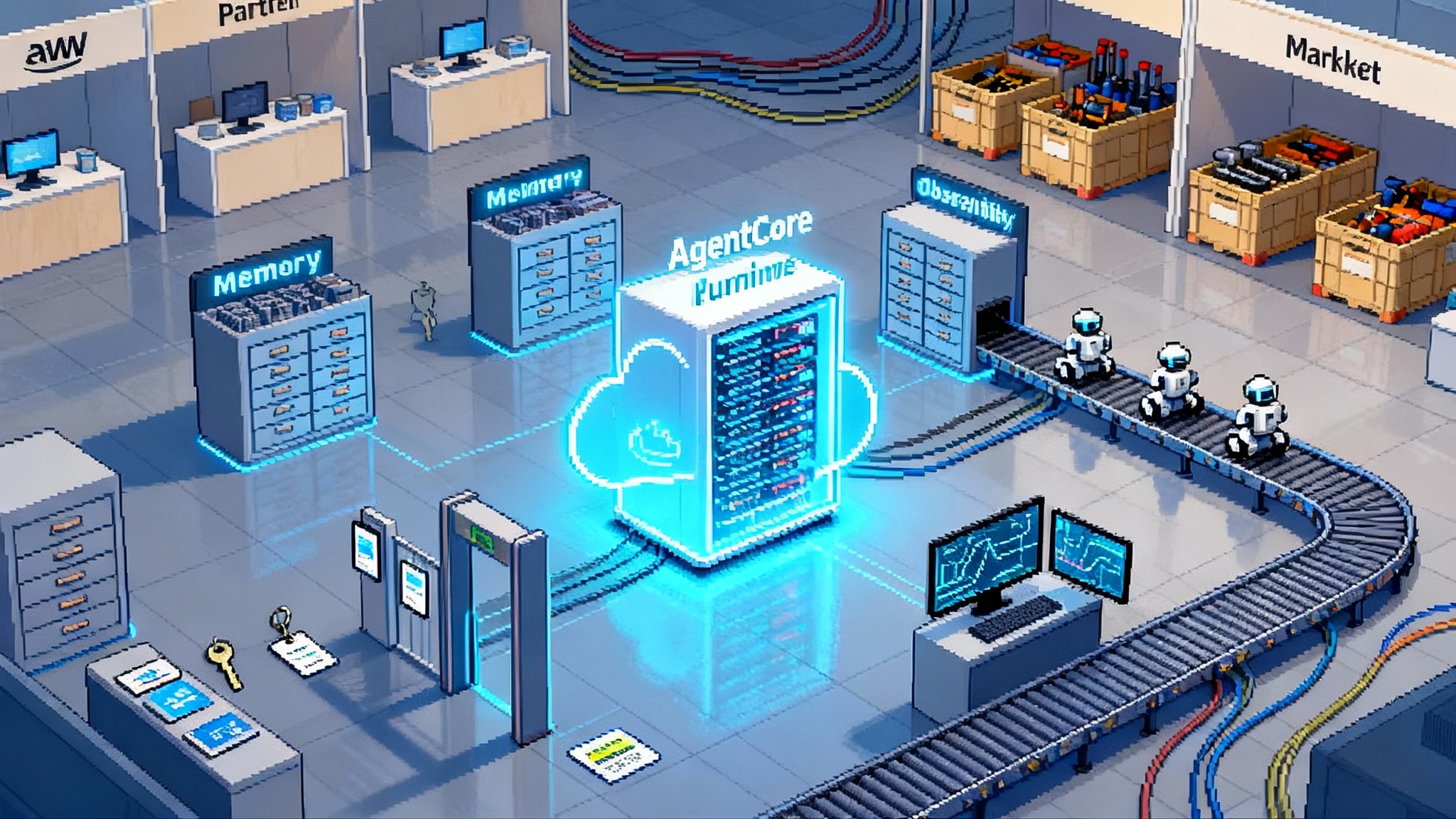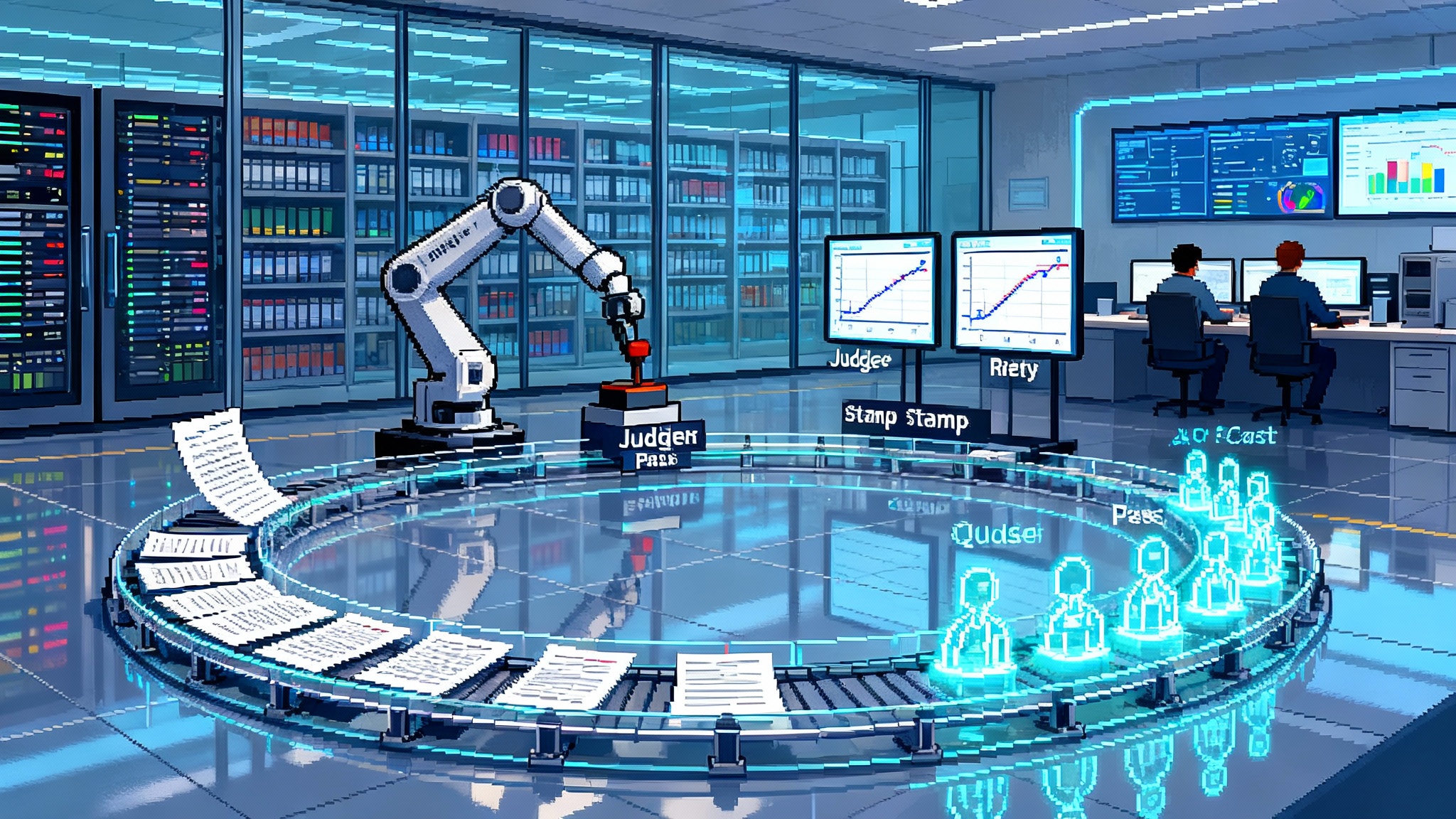Agentforce 360 turns CRM into an enterprise agent OS
Salesforce just repositioned CRM as the operating layer for enterprise AI agents. Here is what changed, why the new primitives matter, and a pragmatic playbook to go live with measurable value by the end of Q1 2026.

Salesforce makes CRM the operating layer for agents
On October 13, 2025, Salesforce introduced Agentforce 360 and framed Customer Relationship Management as the operating layer for enterprise AI agents. The company called this the beginning of the Agentic Enterprise, where humans and agents work side by side across governed data, applications, and collaboration surfaces. You can read the details in the official announcement where Salesforce introduced Agentforce 360 on October 13, 2025.
A day later, on October 14, Salesforce highlighted expanded partnerships that plug frontier models and collaboration surfaces directly into the stack. The company emphasized deeper integrations with OpenAI and Anthropic, with a message tailored to buyers who want innovation without lock in. That partner update is captured in Reuters coverage of how Salesforce deepened AI ties with OpenAI and Anthropic.
This combination of platform primitives and partner choice matters. Many pilots have stalled because security teams lacked evidence of what agents did, business leaders could not tie behavior to outcomes, architects worried about model outages, and public sector buyers needed higher compliance bars. Agentforce 360 answers those blockers with a set of new capabilities that turn point solutions into an operational system.
Why this is more than a feature drop
Think of AI agents as a growing fleet of autonomous vehicles operating on enterprise roads. You do not scale from a demo loop in the parking lot to a city wide service without traffic lights, dashboards, inspections, and tow trucks. Agentforce 360 adds the enterprise equivalents: visibility, standards for safe tool use, grounded answers with receipts, fast feedback through streaming, failover when a model wobbles, and the clearances needed for sensitive workloads.
In short, Salesforce is not shipping a single assistant. It is turning CRM into an orchestration plane where multiple agents can work with context, comply with policy, and prove their value.
The new primitives, explained simply
1) Command Center observability
Command Center is designed as an observability layer for digital labor. It captures every agent session as traceable data, shows latency and error spikes, clusters conversations by intent, and ties consumption to outcomes. Supervisors can monitor real time wallboards in Service Cloud, while platform teams use a Testing Center to simulate traffic before go live.
What it fixes: leaders can see not only what an agent answered, but also how it reasoned and where a step misfired. That makes a weekly improvement loop practical instead of relying on quarterly postmortems.
2) Model Context Protocol interoperability
Model Context Protocol gives agents a consistent way to discover tools and exchange context. Hosted servers let teams expose approved APIs and datasets as safe tools without heavy custom code. Partners can publish their own servers, so agents can work across services while staying inside enterprise controls.
What it fixes: vendor choice without bespoke glue for every integration. It also reduces the blast radius of change since each tool speaks a simple contract rather than a unique adapter.
3) Web grounded citations
Agentforce retrieval can include the live web and return inline citations. That allows agents to cite up to the minute information and surface supporting sources in answers. Buyers can go further by setting policies for citation coverage in evaluation tests, then tracking those metrics in Command Center.
What it fixes: hallucination and stale facts. When an agent says port congestion in Busan is rising, it can attach recent evidence, not just a confident paragraph.
4) Response streaming
Response streaming is generally available across Sales, Service, and Slack surfaces. Users see answers appear token by token. Perceived latency improves, and human teammates can intervene or redirect mid response. That increases trust and reduces the sense that an agent is a black box.
What it fixes: slow feedback loops and low confidence during long generation windows.
5) Automatic model failover
Agentforce adds resiliency by routing around model slowdowns or outages. If a default model degrades, the platform can shift traffic to a secondary provider based on latency, health, or policy. In production, a single foundation model cannot be a single point of failure for revenue or citizen services.
What it fixes: brittle architectures that collapse when one provider has an incident.
6) FedRAMP High availability for government
Agentforce is available in Government Cloud Plus with FedRAMP High authorization. That opens agent use cases that touch the most sensitive unclassified data for federal, state, and local agencies.
What it fixes: the compliance gating item that blocks procurement and go live in the public sector.
From CRM to operating layer
The operating layer claim rests on three shifts that showed up in the launch and partner news.
- First, the data plane is unified. Agents reason with context from Data Cloud and Customer 360 applications, then act in Sales, Service, Field, and Industry Clouds. The agent understands business objects and automations that already run the company.
- Second, the collaboration surface is conversational. Slack becomes the place where humans and agents coordinate. Orchestration happens in the flow of work rather than in a separate console.
- Third, partner choice is real. OpenAI, Anthropic, and Google Gemini can all be first class models within the platform. Architecture becomes a portfolio decision rather than a single vendor bet.
If you are tracking how this trend plays out across the ecosystem, compare it with how Google positions Workspace in our analysis of Workspace as a multi agent OS.
A pragmatic buyer–builder–partner playbook for Q1 2026
The goal is not a tour of features. The goal is production agents that meet compliance, interoperate across systems, and prove business value by the end of the first quarter of 2026. Here is a compact plan that allocates decisions and work across buyers, builders, and partners.
Buyer track: architecture, risk, and outcomes
Weeks 1 to 2
- Decide the model portfolio. Pick a primary model for each domain, a backup for failover, and an evaluation protocol that tests on your data using criteria such as accuracy, refusal rates, latency, and cost. Enable automatic failover with clear thresholds for switching and switching back. Assign ownership to enterprise architecture so failover is a runbook, not an emergency call.
- Set observability baselines. Define the metrics you will manage in Command Center, such as session success rate, escalation frequency, mean time to resolution, and citation coverage. Require that every production agent ships with test cases and a weekly improvement loop tied to those metrics.
- Map compliance zones. If you operate in the public sector or handle controlled data, anchor deployments to Government Cloud Plus and document data access patterns. Confirm privacy, retention, and audit commitments in the relevant trust settings.
Weeks 3 to 6
- Fund three lighthouse use cases that span Sales Cloud, Service Cloud, and an Industry Cloud. For example, sales account research with web citations, service deflection for the top ten intents with clear escalation, and an industry action such as payer eligibility verification or claims triage. Hold back 20 percent of budget for iteration after the first live month.
- Write an agent responsibility matrix. For each use case, list the actions an agent may take, the data it may access, the confidence thresholds, and the escalation rules. Require streaming responses for all human in the loop scenarios to speed supervision.
Weeks 7 to 10
- Approve a production readiness checklist. Include successful dry runs in Testing Center, coverage of evaluation datasets with target pass rates, incident playbooks, and routing tests that prove failover works end to end.
Builder track: patterns, evaluation, and shipping
Weeks 1 to 2
- Stand up Hosted Model Context Protocol servers for your core systems. Start with Salesforce data and actions, then add external tools the agents need such as knowledge bases, ticketing, payments, or logistics. Keep tool contracts small and versioned.
- Configure retrievers. For internal knowledge, index wikis and attachments. For timely facts, enable web retrieval and format responses to include citations that surface source name, snippet, and link. Set a policy to refuse answers beyond a freshness threshold unless web evidence is found.
Weeks 3 to 6
- Build agents in Agentforce Builder with a doc like flow for prompts and a script view for control. Use agent scripts to guard critical steps, then simulate at scale with state injection and evaluation prompts. Stream responses to the interface by default.
- Instrument everything. Emit session traces with topic tags, action outcomes, and token costs. Set alerts for abnormal latency or escalation spikes. Wire Command Center dashboards to a weekly review with product and operations owners.
Weeks 7 to 10
- Run controlled pilots in Slack and the target cloud applications. For service, place agents next to human teams and compare handle time, first contact resolution, and customer satisfaction. For sales, compare research time per opportunity and the share of notes with citations. Push fixes weekly.
A strong identity layer makes these steps safer. For deeper background on agent identity and authorization, see our primer on Agent ID for enterprise agents.
Partner track: where help compounds value
Weeks 1 to 4
- Bring in a systems integrator to accelerate Model Context Protocol patterns and to harden observability. Ask for playbooks for two classes of incidents: grounding failures and model outages. Require a runbook that proves failover and rollbacks.
Weeks 5 to 8
- Source agent apps from a curated marketplace for common actions such as document analysis, summarization, and knowledge synthesis. Let your builders focus on domain logic. Review vendors for enterprise sign in, logging, and data residency before install.
Weeks 9 to 12
- For regulated industries, add a compliance partner to validate the security boundary, the audit trail, and FedRAMP alignment. Use Government Cloud Plus for any workloads that touch high impact data.
If your stack spans multiple clouds, it is worth studying how other providers are productizing agent operations. Our analysis of Bedrock AgentCore turns AgentOps explains how resilience and guardrails can be elevated to platform services.
What to deploy by the end of Q1 2026
- Sales Cloud: an account research agent that produces a short brief with three grounded citations, logs its actions, and triggers the next step on the opportunity. Target: reduce research time from 30 minutes to 10 minutes and lift meeting acceptance by 5 percent.
- Service Cloud: a deflection agent for the top ten intents that streams interim answers, attaches citations when facts are external, and escalates with a crisp transcript. Target: 25 percent deflection with customer satisfaction at or above human agent baseline.
- Industry Cloud: pick one high value action per sector, for example a claims triage sheet in Insurance, a patient intake summary in Healthcare, or a maintenance plan in Manufacturing. Each must run under Command Center with weekly tuning based on clusters of failed intents.
The partner expansions, decoded for buyers
- OpenAI: direct access to Agentforce inside ChatGPT and the ability to use OpenAI models in the Agentforce 360 platform. This is most useful where creativity and multimodal reasoning are critical, such as marketing briefs or rich media service flows.
- Anthropic: Claude becomes a strong option for regulated industries, available within a secure boundary and via Amazon Bedrock. Choose this when refusals and constitutional constraints reduce policy risk or where long context windows improve outcomes.
- Google: Gemini models integrate with Agentforce and Workspace with grounding via Google Search through Vertex AI. This is best for organizations that already rely on Google collaboration tools or need strong multimodal inputs.
The takeaway is not to crown a single model. Use the right tool for the task, keep your evaluation sets fresh, and let automatic failover protect customers from provider hiccups.
Risks and how to manage them
- Hallucination and outdated facts: require citations for any answer that relies on external knowledge. Enforce a freshness rule for claims about the outside world and block responses that do not meet it. Track citation coverage in Command Center.
- Loss of observability: never ship an agent without session tracing, quality scores, and a weekly review of clustered conversations that surface new intents or show failure patterns.
- Vendor outage or degraded latency: configure failover with a cold plus warm model strategy and test it monthly. Keep a rollback plan that pins a model when quality drifts.
- Compliance drift: align trust layer settings to your data handling policies. For government use cases, deploy only in Government Cloud Plus with FedRAMP High.
How to measure value
- Efficiency: mean time to resolution in Service, time to first meeting in Sales, and cycle time per industry action.
- Effectiveness: deflection rate with quality thresholds, conversion rate changes for touched opportunities, and citation coverage for research heavy tasks.
- Reliability: session success rate, escalation frequency, model switch events, and latency percentiles.
- Cost: tokens per successful task and cost per deflected case, tracked by agent and by intent cluster.
The bottom line
Agentforce 360 does not simply add another assistant to a toolbar. It turns CRM into an operating layer for agents that can be observed, governed, and swapped across models. The primitives are the story. A control tower for digital labor. A standard that lets agents use tools without custom glue. Answers that carry their receipts. Streams that feel instant. A safety net when models wobble. Clearances for the most demanding public sector missions.
If you set the architecture now, fund three lighthouse use cases, and enforce an evidence culture, you can move from pilot to production by the end of the first quarter of 2026 with confidence, speed, and proof.








